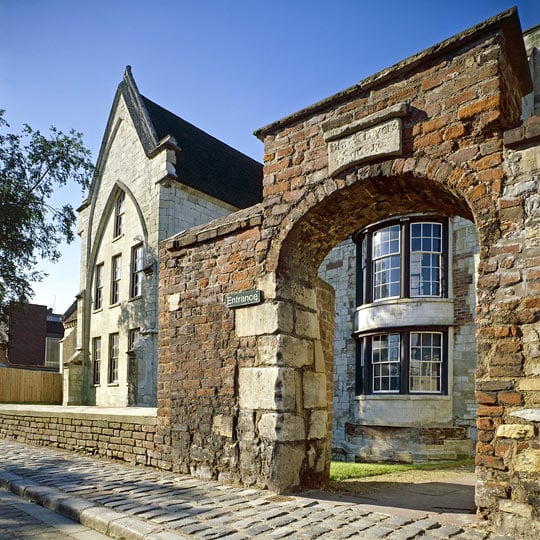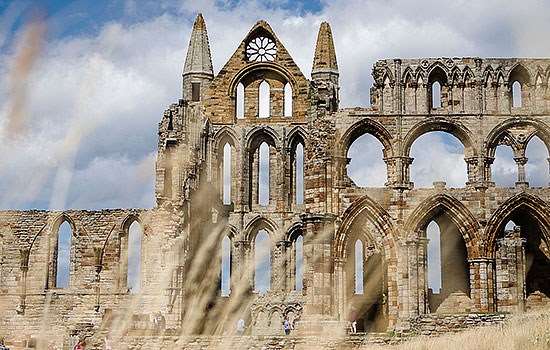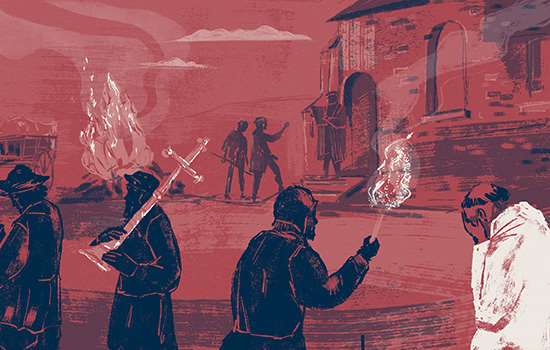History of Blackfriars
The Gloucester Blackfriars is one of the most complete Dominican priories to survive from the Middle Ages in England.
The mendicant orders, or friars, established themselves across Europe in the early 13th century. They were particularly engaged with preaching and charitable work with the laity.

The Dominicans, or Blackfriars, first came to Gloucester in 1239 at the instigation of Sir Stephen de Hermshall.
The building of the house began almost immediately, largely with materials and funds donated by Henry III, and was completed in about 1270 as home for some forty friars.
For three centuries the friars were a familiar part of the church establishment, enjoying a revival of popularity at the very end of the Middle Ages. Unfortunately for them, the property they owned was considerable and they were suppressed, along with the larger monasteries, in 1539. By this time the number of friars living in Gloucester had fallen to just six and a prior.
A local alderman called Thomas Bell bought the Gloucester Blackfriars and converted the church into a mansion and the other buildings into a weaving factory.
In the 19th century the west range became a row of terraced houses and the library range was used for bottling.
Extensive conservation work has been carried out on the property since it came under guardianship in 1960.
Description
The particular interest of Gloucester’s Blackfriars is the complete nature of its survival with several rare features, and its history of adaptation and use.
The church is on the north side of the quadrangular plan; it is incomplete, for the four arms are all truncated. In the process of conversion, the chancel and nave were reduced and closed off by gable-end walls with central projecting chimney stacks. The north nave aisle was completely demolished while that to the south was partially demolished and the arcades infilled.
The chancel became the great hall and floors and partitions were inserted into the former transepts and nave to form chambers. The south transept was subsequently demolished. Since 1960 all post-medieval floors and partitions have been removed to expose the proportions of the church and surviving medieval features.
The magnificent scissor-brace roof is original and documented as a gift from the royal forests during Henry III’s reign.
The refectory was situated at the south end of the west range and there was a dormitory in the range opposite, above the chapter house where the affairs of the community were decided. In later years part of this east range became a separate lodging for the prior.
The friars’ missionary role meant that the layout of Blackfriars differed in some respects from that of a typical Benedictine or Cistercian abbey. The whole of the upper floor of the south range was occupied by a library that still retains twenty-nine of its original medieval study carrels – a unique survival.
The nave of the church was also wider and longer in order to accommodate the large numbers of men and women who came to hear the friars’ sermons.
Further Reading
Morely, BM, Blackfriars, Gloucester (London, 1979)



